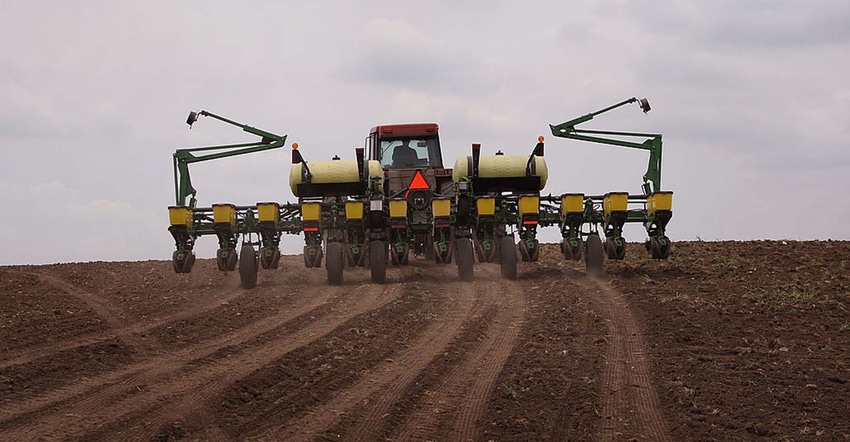Commodity prices, interest rate concerns cloud farmer sentiment
Effect of banking sector problems also weighs on the minds of producers.
April 4, 2023

Farmer sentiment weakened again in March as the Purdue University/CME Group Ag Economy Barometer fell 8 points to a reading of 117. Both of the barometer's sub-indices declined 8 points in March, leaving the Current Conditions Index at 126 and the Future Expectations Index at 113. This month’s Ag Economy Barometer, which is calculated each month from 400 U.S. agricultural producers' responses to a telephone survey, was conducted between March 13-17.
"Rising interest rates and weaker prices for key commodities including wheat, corn, and soybeans from mid-February through mid-March were key factors behind this month's lower sentiment reading," said James Mintert, the barometer's principal investigator and director of Purdue University's Center for Commercial Agriculture. "Although the March survey did not include any questions directly related to the bank closures, during an open-ended comment question posed at the end of each survey, multiple respondents voiced concerns about the banking sector's problems and its potential to hurt the economy. These problems also likely -weighed on producer sentiment."
The Farm Financial Performance Index remained unchanged from February at a reading of 86. Producers point to higher input costs (34% of respondents) and rising interest rates (25% of respondents) as their number one concern for the year ahead. Notably concern about higher input cost has been falling since last summer's peak when 53% of respondents cited it as their number one concern for the year ahead. At the same time, the percentage of producers pointing to interest rates as a top concern has been increasing, up 11 points from last summer.
While there was little change in the Farm Capital Investment Index, down one point to a reading of 42 in March, there was a change in how respondents perceived whether now was a good or bad time for large investments. Since last July, respondents who felt now is a bad time to make large investments have consistently chosen "increased prices for farm machinery and new construction" as the key reason. That changed in March as more felt that rising interest rates (34% of respondents, up from 27% in February) over high prices (32% of respondents, down from 45% in February) was the key reason that now is a bad time for such investments.
Producers' outlook for farmland values in the short-term and long-term were mixed in March. The Short-Term Farmland Value Index declined 6 points to 113 while the Long-Term Farmland Value Index rose 5 points to 142. This month's short-term index value provided the weakest reading since September 2020 and left the index 32 points lower than a year earlier. One out of five producers in this month's survey said they expect farmland values to weaken in the next 12 months. Long-term, 17% of respondents said they expect weaker values in the next 5 years, up from 13% a year ago and 7% two years ago.
This month's survey included several renewable energy questions focused on the ethanol and renewable diesel sectors. When asked to look ahead 5 years, nearly half (46%) of respondents said they expected the renewable diesel industry to be larger than it is today, while just a quarter (25%) expect the ethanol industry to grow over the same time period. In a follow-up question, respondents were asked what impact they expect the renewable diesel industry to have on soybean prices over the upcoming 5 years with 39% expecting a price increase of up to $0.50 per bushel, 28% expecting a boost in price between 50 cents up to $1.00 per bushel, and 21% expecting soybean prices to rise by $1.00 or more per bushel.
The full Ag Economy Barometer report can be accessed here.
You May Also Like



